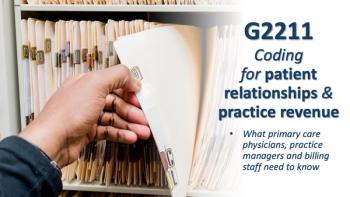
Physician Communication with Hospitalized Patients Key
Simply being on time, or communicating when physicians can see a patient, can spare anxiety, stress.
This is a true tale of two hospitalized patients. One exemplary, one not.
A week ago yesterday, I underwent a total hip replacement. From the first physician visit, communications were clear, concise and unambiguous.
Hospital admission was smooth, timely, and organized.
My family knew what was going on, when and how well during the surgery. During and out of recovery, so did I.
Nursing knew the protocols, let me know what was happening and when my physician would stop by, and responded within moments as if they anticipated every need.
They communicated with my family, too.
I was like clockwork. I knew when I would be discharged, what would happen, what was expected of me, of them, and of my family. The orders were clear and illustrated. The discharge package was complete and repeatedly reinforced.
Home care was prompt to the minute. Same with physical therapy. I was walking with a cane four days post-op. Today, just for stability.
An exemplary example of how things should be, and work. As a former hospital CEO, I was mightily impressed.
On Sunday, my daughter had what turned out to be a serious reaction to a medication. Seizure, 911, ambulance, hours in the ED, tests, admission to hospital (same hospital system), instructions to return to the hospital by 8:30 a.m. to see the consulting neurologist. My wife had to go. Hungry, tired, and scared.
By 11 a.m., she was still hungry, tired, needing a bathroom break, scared, afraid to leave the room, and being told the doctor would be there "shortly," and totally uninformed with nursing in the dark, too.
By 1 p.m., my wife chanced a trip to the bathroom after being told the “doctor was on the floor” and would be there within ten minutes.
It was almost 3 p.m. and a dozen phone calls to me before the neurologist showed. He was nice. He spent some time, reassured and talked over his diagnosis, discussing the imaging results.
An EEG and OK from the hospitalist, and my daughter could go home. No lasting effect, no damage, no harm, no foul.
At 6 p.m. or so, someone showed to do the EEG. No word on the hospitalist, who was "on the floor."
At 9 p.m., still no hospitalist, but a nurse saying the paperwork was being processed for her discharge. No information, no discussion, no visit, no follow-up. Nursing had none to give, either.
At 10 p.m., discharge with a few generic brochures and no instructions. For my wife, nothing to eat and 14 hours of anxious waiting with no clue of what was going on except for one physician visit and a "maybe" diagnosis.
As a former hospital CEO, I would have had multiple heads rolling as a consequence of any patient and family member being treated in this way.
My advice to physicians: Aspire to the first example. Say what you will do, and do what you say. Care is mostly about caring.
Simple as that.
Newsletter
Optimize your practice with the Physicians Practice newsletter, offering management pearls, leadership tips, and business strategies tailored for practice administrators and physicians of any specialty.








